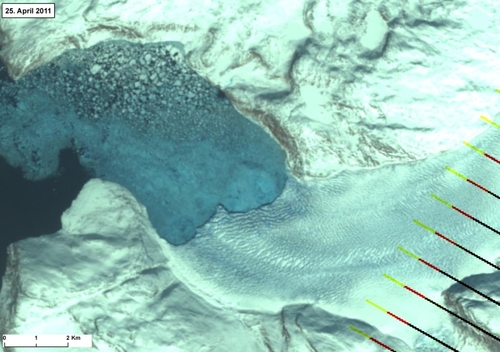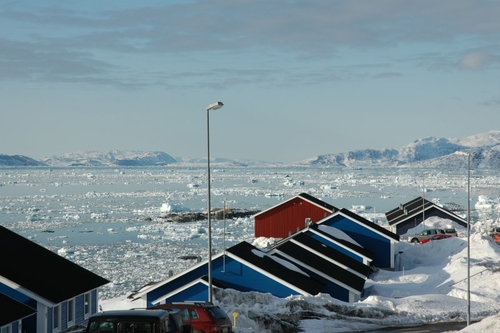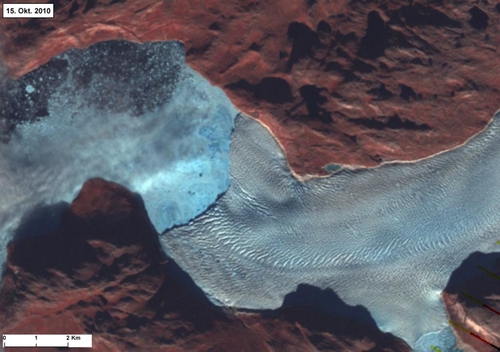Narssap Sermia sends large quantities of glacier ice into Godthåbsfjorden this winter (2010-2011) Published 08.05.2011

This winter, ice conditions in Godthåbsfjorden were unusual compared with previous years. The winter was characterized by large quantities of fjord and glacier ice near Nuuk as opposed to previous years when only small amounts of fjord and glacier ice were observed over short time periods near Nuuk. Since 2008, the Greenland Climate Research Centre (GCRC), based at the Greenland Institute of Natural Resources, has focussed intensely on Godthåbsfjorden and the three glaciers in direct contact with the fjord (Narssap Sermia, Akugdlerssûp Sermia and Kangiata Nunâta Sermia). Today, Godthåbsfjorden is being monitored by GCRC in collaboration with Greenlandic, Danish and international institutions. These monitoring activities are carried out using satellites, buoys within the fjord, camera surveillance, GPS measurements and observations from ships/boats.
What makes the winter of 2010-2011 special compared with previous years? It is well known that air temperatures were unusually high in 2010. GCRC also observed unusually high temperatures within the fjord during autumn and winter. As a result, the fjord ice that formed in the inner parts of Godthåbsfjorden was unusually thin and could not withstand the pressure from Narssap Sermia. Thus, glacier ice from Narssap Sermia was able to leave the fjord almost unhindered all winter. In previous years, the glacier ice melted in the fjord before reaching Nuuk. At first, it was held back by a thick layer of ice during winter. Later, it was held back by the fjord wind, which is mostly directed into the fjord. Inside the fjord it is very warm during summer, and the ice quickly melts.

Godthåbsfjorden seen from Nuuk on 1 May 2011. Photo: Søren Rysgaard.

Satellite photos of Narssap Sermia on 15 October 2010 and 25 April 2011. In between the two images around 5.2 square kilometres of glacier ice disappeared at the glacier front.

